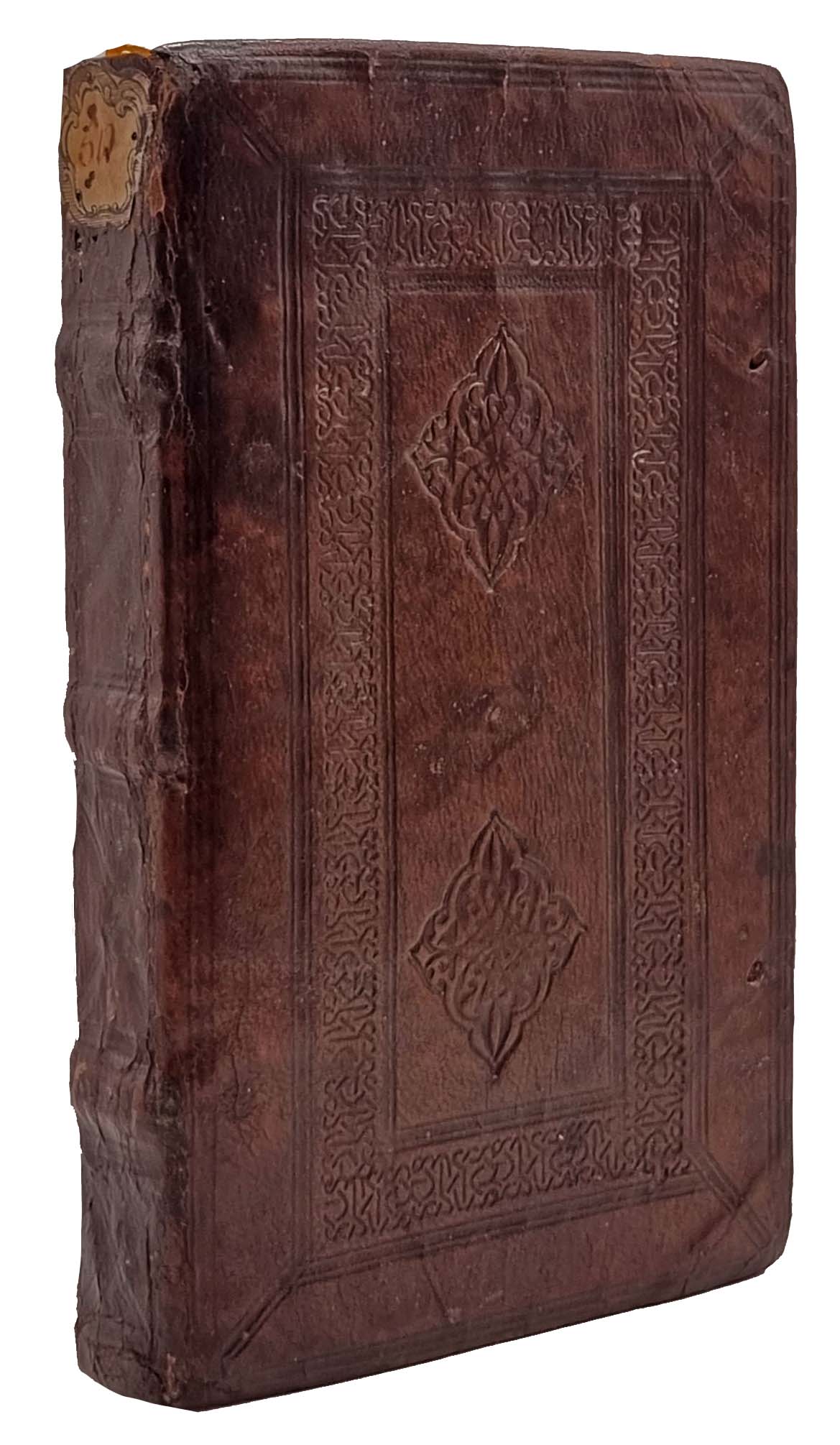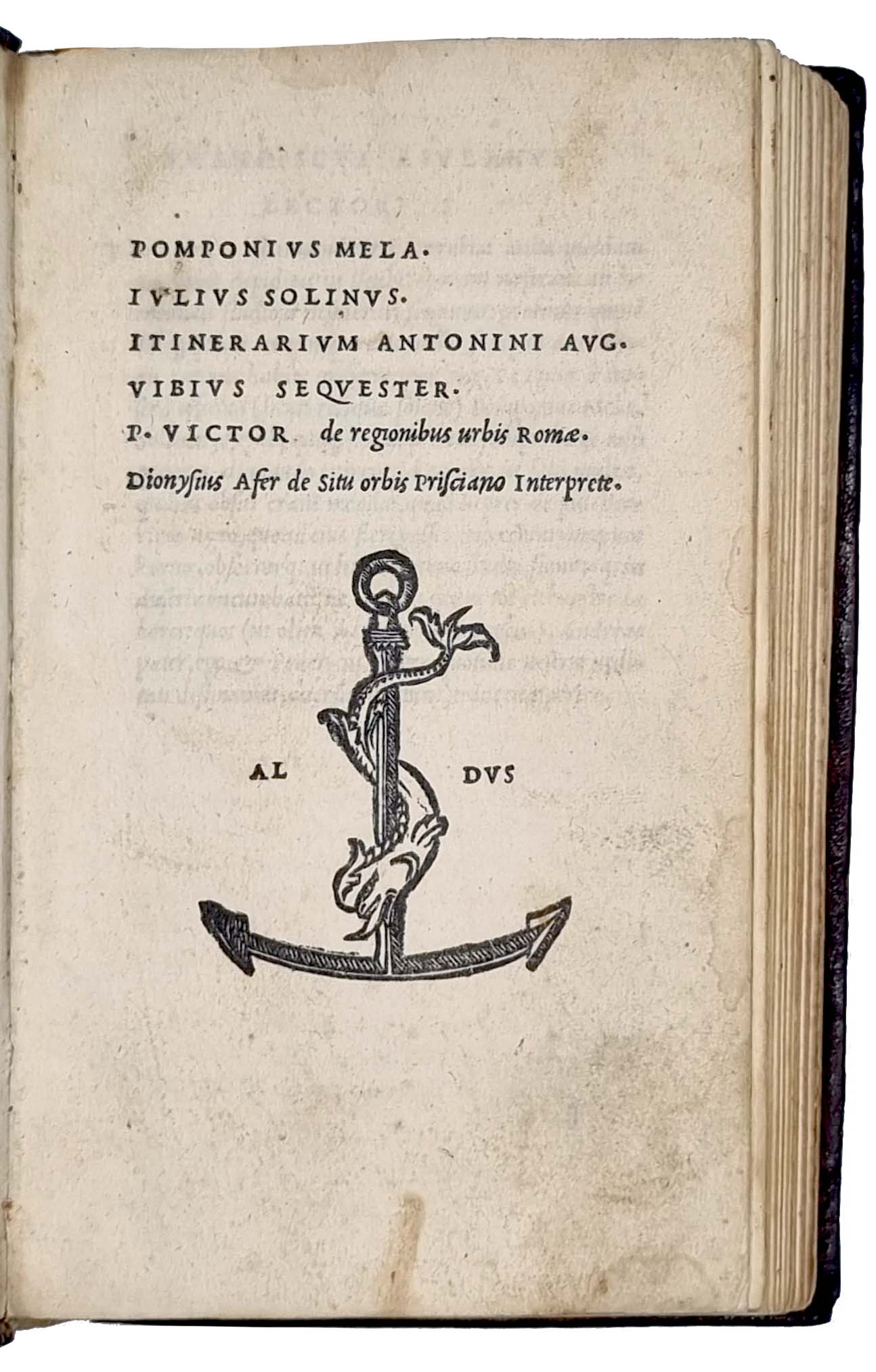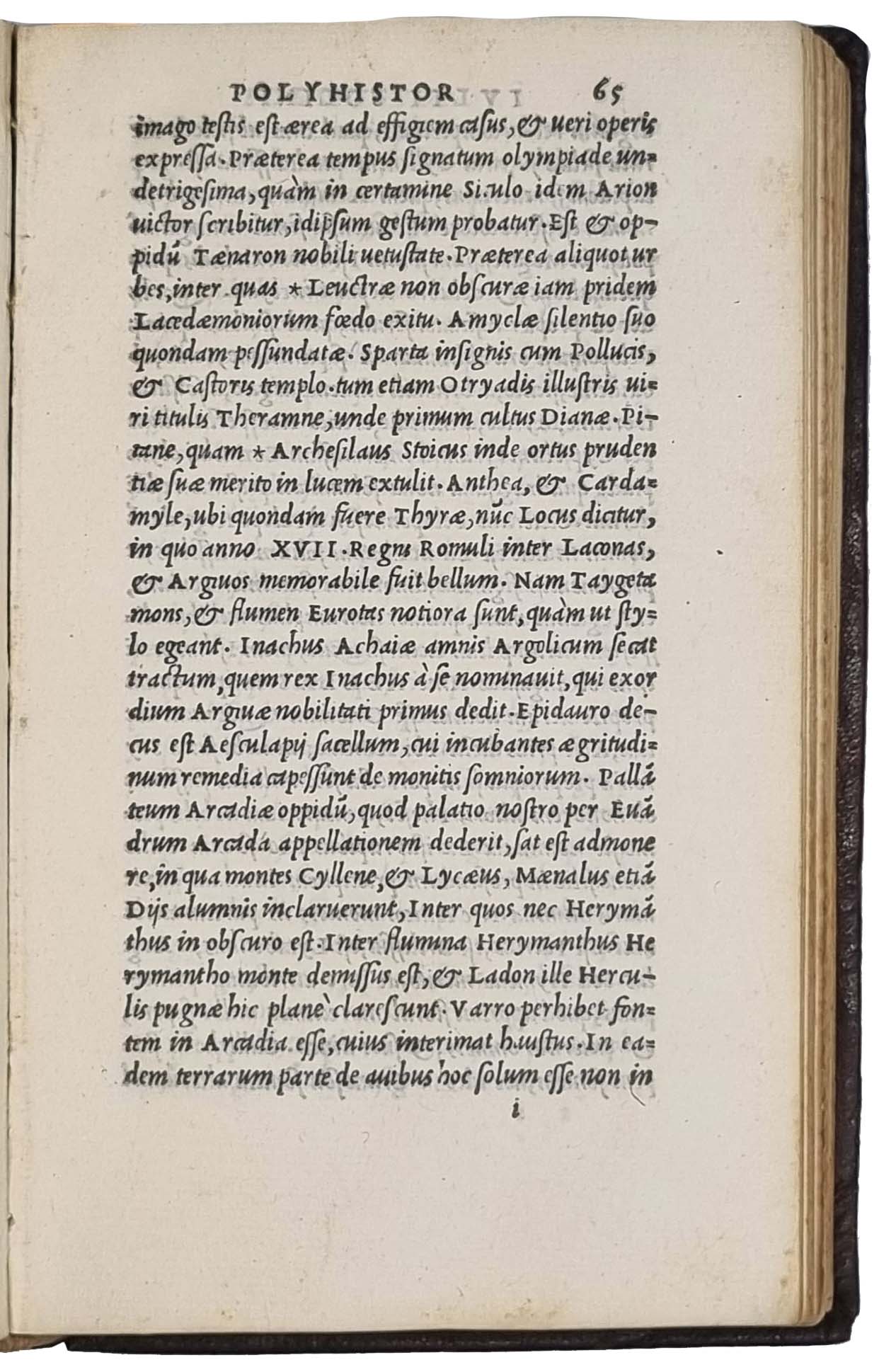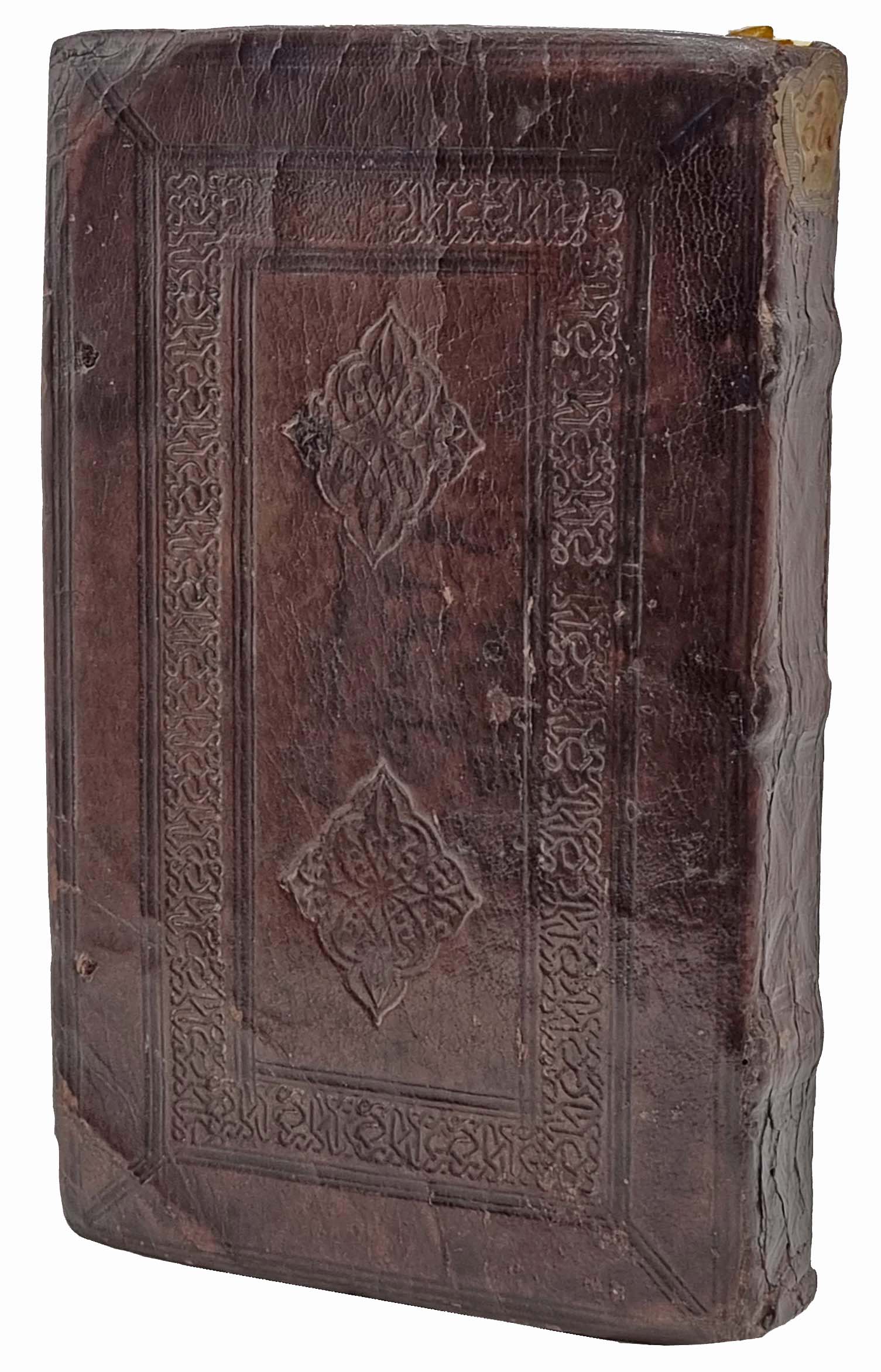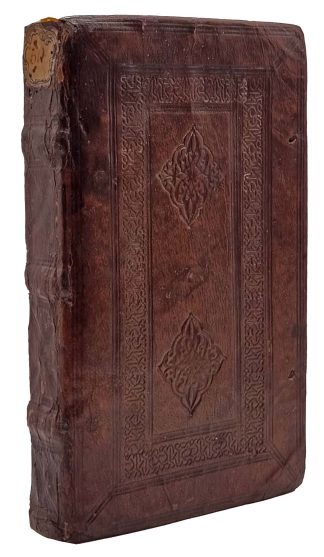POMPONIUS MELA, IULIUS SOLINUS, VIBIUS SEQUESTER, PUBLIUS VICTOR and DIONISIUS PERIEGETES.
HANDSOME CONTEMPORARY MOROCCO
De situ orbis (…) Polihistor (…) Itinerarium antonini (…) De fluminibus (…) De regionibus urbis romae (…) De situ orbis Prisciano interprete
Venezia, Aldo Manuzio and Andrea Torresano, 1518£11,000.00
8vo, six parts in one, separate half-titles, ff. 233 (iii). Italic letter, Aldine device to t-p and verso of last. Light fingermarks to lower blank outer corner of t-p and to blank margins of a couple of ll., small ink smudge to one fol., very light waterstain to upper blank corner of three gatherings, slight yellowing to a few ll. A very good copy in contemporary morocco, covers double blind ruled to a panel design, inner border with blind ropework tools, two arabesque ornaments, spine with raised bands, blind cross-hatched decoration in compartments, missing ties. Early ms. autographs “Frachet” to front paste-down, occasional contemporary Latin marginalia mainly to first part. Old paper label to head of spine ‘510’.
Attractive copy of this Aldine collection of classical works on geography, in a lovely, very well-preserved contemporary northern-Italian binding. The arabesque ornaments on the covers of the volume, and their variations, were predominantly used in Venice at the beginning of the 16th century (See Needham 35; De Marinis 1797bis, 1921), but they also appear on Milanese bindings (combined with ropework border: see Davis III, 244; bound for Jean Grolier: Needham 41). Ropework decorations are typical of northern Italy, but the ornate border on this binding is a particularly intricate and fine example.
Pomponius Mela (d. c. 45) was the first Roman geographer and his ‘De situs orbis’ is the earliest preserved treatise on geography in Latin. “Though the work was largely a borrowing from Greek sources (…), it was unique among the ancient geographies in that it divided the Earth, which Mela placed at the centre of the universe, into five zones: a northern frigid zone, a northern temperate zone, a torrid zone, a southern temperate zone, and a southern frigid zone.” (Encyclopedia Britannica). The treatise focuses on the known world, outlining a journey across North Africa, Asia and finally Europe. The contemporary marginalia to this work are interesting: a reader corrected the spelling of several geographical names and annotated different readings on the basis of other sources such as Strabo and Ptolemy. ‘Polihistor’ is by the grammarian Julius Solinus (c. 210-258). Also known as ‘De mirabilibus mundi’, ‘On the wonders of the world’, this is an influential compilation – largely drawing from Mela, Pliny and Suetonius – of the most curious facts concerning the peoples, regions, plants and animals of the world, beginning from Rome and moving on to the Mediterranean, northern Africa, Near East and India.
‘Itinerarium Antonini’, by an unknown author, can be described as a ‘road map’ of the Roman Empire in the III century AD, containing a register of all the stations along the major roads and their distances. This is followed by Vibius Sequester’s alphabetical list of geographical names mentioned by Latin poets (Virgil, Ovid, Lucan and Silius Italicus), comprising rivers, springs, lakes, forests, marshes, mountains and peoples. ‘De regionibus Urbis Romae” is a brief list of all the important buildings, streets and bridges that can be found in different areas of Rome, spuriously attributed to a fictitious Publius Victor. Last in the collection is a Latin verse translation of Dionysius Periegetes’ ‘Description of the world’, by the grammarian Priscian. This collection was edited Aldus’ brother-in-law, Gian Francesco Torresani d’Asola (c. 1498-1558).
USTC 841939; EDIT 16 CNCE 46864; Adams M1053; BM STC It. C16, p. 432; Graesse V, p. 401; Brunet IV, p. 800; Renouard Alde 83:6.
In stock


